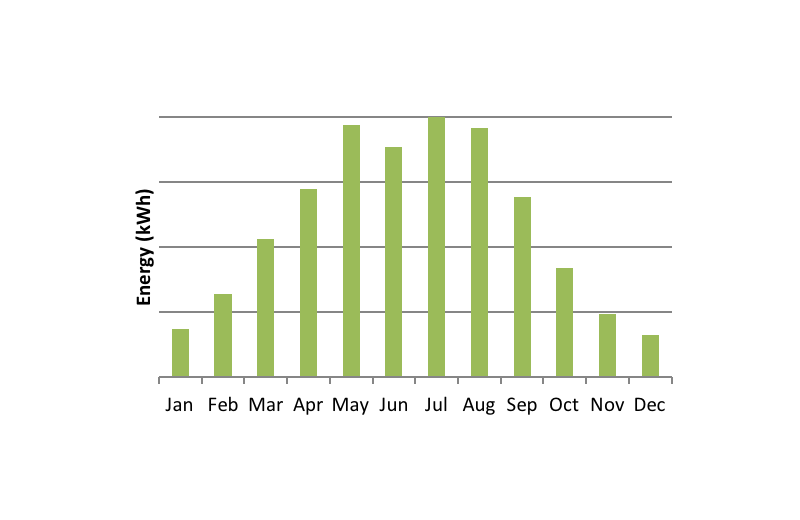Do Solar Panels Generate Electricity in the Winter? Three Reasons They Do.
Do solar panels generate electricity in the winter? This seems a timely question as we enter the darker days of winter. The amount of energy produced by solar panels is a function of the intensity of the sunlight shining on it, the ambient temperature, and the hours of sunlight. Let’s look at each of these three factors one by one.
The more intense and direct the sunlight, the greater the quantity of electricity generated.
For maximum power, solar panels want to be both perpendicular to the incoming light, and in full sun. Thus, the best tilt angle varies by latitude. In the Arctic, solar panels are installed on the sides of buildings. In the tropics, the panels are laid flat. Here on Southern Vancouver Island, solar panels at a lower tilt work better in the summer; and solar panels at a greater tilt work better in the winter. A tilt of 30o works best overall to maximize annual solar production.
Photovoltaic (PV) solar panels convert light (photo), not heat, into electricity.
This is an important distinction. Solar panels do not like it hotter, just brighter. PV panels, like most electronics, are more efficient at colder temperatures. Typically, solar panels are more efficient by a factor of -0.5% per C (note the minus sign). The power rating of a solar panel is measured at 25C. Thus, a 300-watt (W) solar panel is 300W at 25 C. At freezing (0C) that same solar panel is 338 W, and at +40C, the solar panel is 278W. Thus, PV panels have a greater power to generate electricity in the winter.
It is hours of sunlight that is the biggest factor determining overall energy production.
Energy generation is a product of the power of the panel and the hours of sunlight. Our 300W panel above, receiving 10 hours of sunlight, generates 3,000 Watt-hours (Wh) – or 3 kilo-watt-hours (kWh) – of electrical energy at 25oC. In winter at 0oC, our solar panel (now 338W) gets 4 hours of sunlight producing 1,352 Wh. In summer, our solar panel (now 279W) getting 14 hours of sunlight produces 3,892 Wh. Although the solar panel is less powerful in the summer, the longer days more than makeup for the lower power.
The graph shows solar energy production by month. The modelling software used takes into account all three factors of intensity, temperature and hours of sunlight.

This is all to show that solar panels on Southern Vancouver Island do produce electricity in the winter but less than in the summer. Approximately, 70% of the solar energy is produced in half the year between April and September. As solar system designers, we craft the system to maximize the summer sunlight, to be in direct sunlight, and to keep the solar panels cool. Incidentally, higher operating temperatures are an issue with solar roof tiles as they are subject to attic heating.
Battery storage for solar energy.
If there is not enough sun here in the winter, what about storing summer solar energy in batteries for the winter? How many batteries would it take? To get through a grey Southern Vancouver Island winter, the average home would need over 200 Tesla power walls. Not to mention the $2,000,000 price tag for the power walls, you’d need a small house to hold all them all.
Therefore, it makes more sense to use BC Hydro as your battery. BC Hydro’s Net Metering programme measures the energy you consume and subtracts the energy you produce. You pay for the net energy consumption. If you produce more energy than you consume, an energy credit is built (i.e., BC Hydro owes you energy). In this way, BC Hydro will “store” or credit your surplus summer electricity for consumption in the winter. In fact, this is a benefit to BC Hydro, by enabling them to hold more water in reservoirs during the drier summer months.
Well designed solar grid tie systems are meant to overproduce electricity in the summer and shoulder seasons, feed the surplus back to BC Hydro, and then draw down the energy credit in the winter. In this way, it is possible to be net zero for electricity – on an annual basis and without batteries.
Unless you need batteries for backup power or to be off-grid, spend the money on more solar panels -not on batteries. Batteries have no payback; whereas, solar panels reduce GHGs and save you money.



